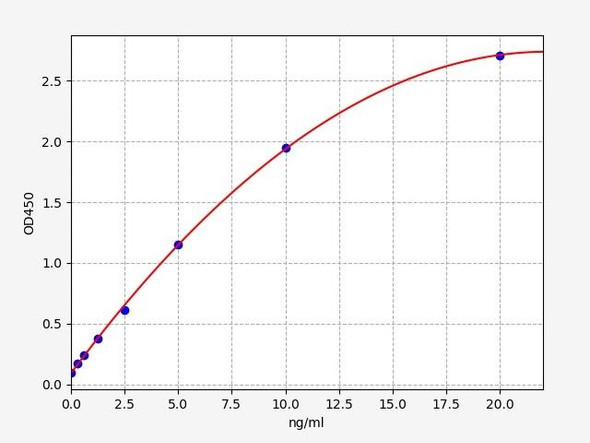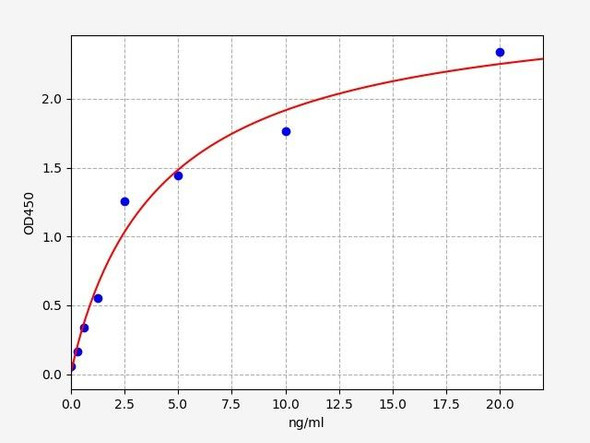Anti-RUNX2 Antibody (CAB11753)
- SKU:
- CAB11753
- Product type:
- Antibody
- Antibody Type:
- Monoclonal Antibody
- Reactivity:
- Human
- Mouse
- Host Species:
- Rabbit
- Isotype:
- IgG
- Synonyms:
- AML3
- CBF-alpha-1
- CBFA1
- CCD
- CCD1
- CLCD
- OSF-2
- OSF2
- PEA2aA
- PEBP2aA
Description
| Product Name: | RUNX2 Rabbit mAb |
| Product Code: | CAB11753 |
| Size: | 20uL, 50uL, 100uL |
| Synonyms: | AML3, CBF-alpha-1, CBFA1, CCD, CCD1, CLCD, OSF-2, OSF2, PEA2aA, PEBP2aA |
| Applications: | WB |
| Reactivity: | Human, Mouse |
| Host Species: | Rabbit |
| Immunogen: | A synthesized peptide derived from human RUNX2 |
| Applications: | WB |
| Recommended Dilutions: | WB 1:500 - 1:2000 |
| Reactivity: | Human, Mouse |
| Positive Samples: | U2OS, PC-3, U-937, Mouse testis, Mouse thymus |
| Immunogen: | A synthesized peptide derived from human RUNX2 |
| Purification Method: | Affinity purification |
| Storage: | Store at -20°C. Avoid freeze / thaw cycles. Buffer: PBS with 0.02% sodium azide, 0.05% BSA, 50% glycerol, pH7.3. |
| Isotype: | IgG |
| Sequence: | Email for sequence |
| Gene ID: | 860 |
| Uniprot: | Q13950 |
| Calculated MW: | kDa |
| Observed MW: | 60KDa |
| UniProt Protein Function: | AML3: Transcription factor involved in osteoblastic differentiation and skeletal morphogenesis. Essential for the maturation of osteoblasts and both intramembranous and endochondral ossification. CBF binds to the core site, 5'- PYGPYGGT-3', of a number of enhancers and promoters, including murine leukemia virus, polyomavirus enhancer, T-cell receptor enhancers, osteocalcin, osteopontin, bone sialoprotein, alpha 1(I) collagen, LCK, IL-3 and GM-CSF promoters. In osteoblasts, supports transcription activation: synergizes with SPEN/MINT to enhance FGFR2-mediated activation of the osteocalcin FGF-responsive element (OCFRE). Inhibits KAT6B-dependent transcriptional activation. Interaction with SATB2 results in enhanced DNA binding and transactivation by these transcription factors. Heterodimer of an alpha and a beta subunit. Interacts with HIVEP3 and HIPK3. The alpha subunit binds DNA as a monomer and through the Runt domain. DNA-binding is increased by heterodimerization. Interacts with XRCC6 (Ku70) and XRCC5 (Ku80). Interacts with KAT6A and KAT6B. Binds to cyclin B1 CCNB1. Interacts with DDX5. Specifically expressed in osteoblasts. 3 isoforms of the human protein are produced by alternative splicing. |
| UniProt Protein Details: | Protein type:Transcription factor; DNA-binding Chromosomal Location of Human Ortholog: 6p21 Cellular Component: nucleoplasm; transcription factor complex; cytoplasm; nuclear chromatin Molecular Function:protein domain specific binding; protein binding; bHLH transcription factor binding; chromatin binding; transcription factor activity; ATP binding Biological Process: embryonic forelimb morphogenesis; transcription initiation from RNA polymerase II promoter; ossification; positive regulation of transcription, DNA-dependent; cell maturation; regulation of fibroblast growth factor receptor signaling pathway; chondrocyte development; embryonic cranial skeleton morphogenesis; stem cell differentiation; osteoblast development; odontogenesis of dentine-containing teeth; BMP signaling pathway; osteoblast differentiation; positive regulation of osteoblast differentiation; positive regulation of chondrocyte differentiation; negative regulation of smoothened signaling pathway; positive regulation of cell proliferation; gene expression; negative regulation of transcription, DNA-dependent; regulation of odontogenesis of dentine-containing teeth; osteoblast fate commitment; T cell differentiation; endochondral ossification Disease: Metaphyseal Dysplasia With Maxillary Hypoplasia With Or Without Brachydactyly; Cleidocranial Dysplasia |
| NCBI Summary: | This gene is a member of the RUNX family of transcription factors and encodes a nuclear protein with an Runt DNA-binding domain. This protein is essential for osteoblastic differentiation and skeletal morphogenesis and acts as a scaffold for nucleic acids and regulatory factors involved in skeletal gene expression. The protein can bind DNA both as a monomer or, with more affinity, as a subunit of a heterodimeric complex. Two regions of potential trinucleotide repeat expansions are present in the N-terminal region of the encoded protein, and these and other mutations in this gene have been associated with the bone development disorder cleidocranial dysplasia (CCD). Transcript variants that encode different protein isoforms result from the use of alternate promoters as well as alternate splicing. [provided by RefSeq, Jul 2016] |
| UniProt Code: | Q13950 |
| NCBI GenInfo Identifier: | 17368460 |
| NCBI Gene ID: | 860 |
| NCBI Accession: | Q13950.2 |
| UniProt Related Accession: | Q13950 |
| Molecular Weight: | 56.6kDa |
| NCBI Full Name: | Runt-related transcription factor 2 |
| NCBI Synonym Full Names: | RUNX family transcription factor 2 |
| NCBI Official Symbol: | RUNX2 |
| NCBI Official Synonym Symbols: | CCD; AML3; CCD1; CLCD; OSF2; CBFA1; OSF-2; PEA2aA; PEBP2aA; CBF-alpha-1 |
| NCBI Protein Information: | runt-related transcription factor 2 |
| UniProt Protein Name: | Runt-related transcription factor 2 |
| UniProt Synonym Protein Names: | Acute myeloid leukemia 3 protein; Core-binding factor subunit alpha-1; CBF-alpha-1; Oncogene AML-3; Osteoblast-specific transcription factor 2; OSF-2; Polyomavirus enhancer-binding protein 2 alpha A subunit; PEA2-alpha A; PEBP2-alpha A; SL3-3 enhancer factor 1 alpha A subunit; SL3/AKV core-binding factor alpha A subunit |
| Protein Family: | Runt-related transcription factor |
| UniProt Gene Name: | RUNX2 |
| UniProt Entry Name: | RUNX2_HUMAN |





